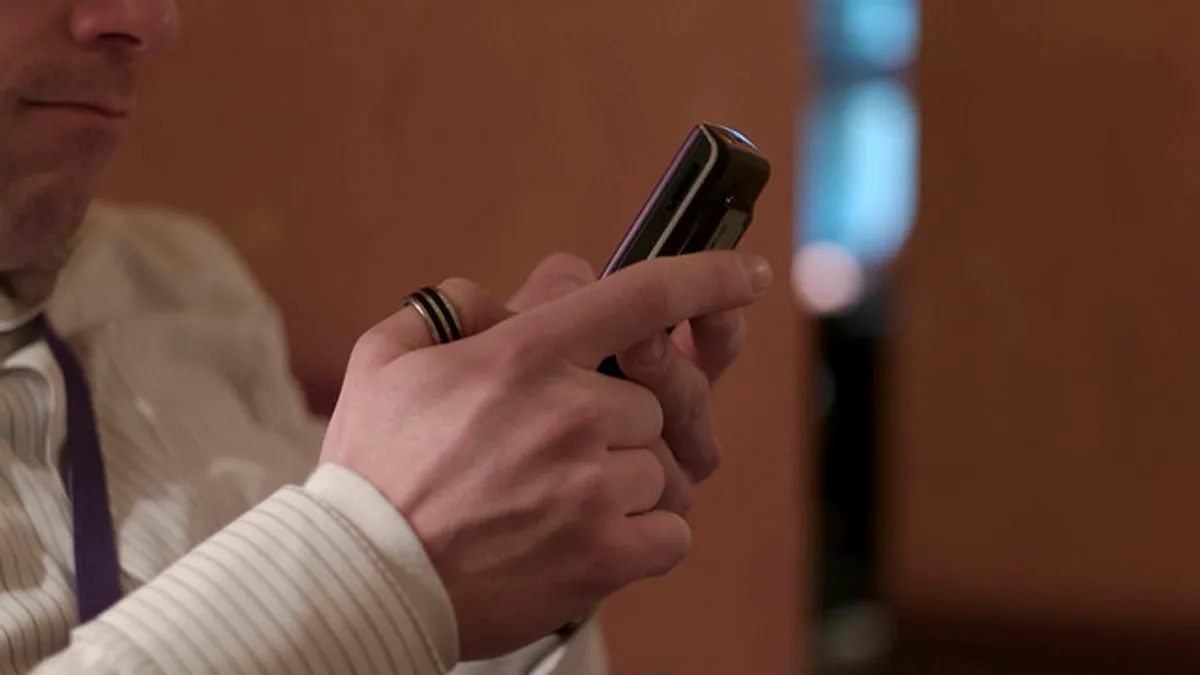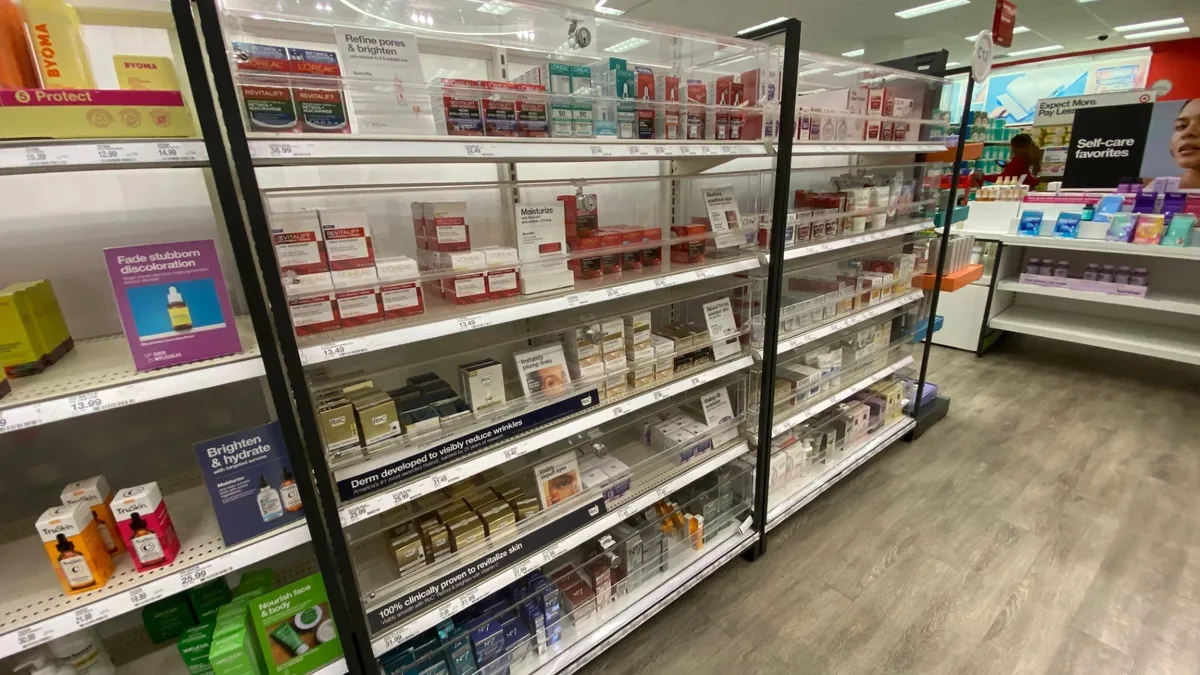Reports of the death of flash sales may have been greatly exaggerated.
Make no mistake: Flash sales are by no means the phenomenon they were just a few years ago, when sites like Groupon, LivingSocial, Gilt Groupe and Zulily dazzled investors and helped lead retail out of its Great Recession-era malaise. But there’s still a place for the flash model—especially on mobile.
In fact, Groupon does mobile better than any other retailer, at least according to the results of a new survey conducted by digital quality and testing firm Applause and published under its Application Resources Center (ARC) aegis. After analyzing more than 1.2 million mobile retailer app star ratings and consumer reviews across Apple’s App Store and the Google Play storefront, ARC determined that Groupon has racked up an industry-high user sentiment score of 83 points out of 100. Furniture flash sales site One Kings Lane, which was acquired in June by Bed Bath & Beyond, follows in second at 82 points. Still another flash sales merchant, Rue La La, rounds out the top five at 77.6 points.
Gap, Disney Store and Toys “R” Us—three legacy retailers at the opposite end of the ARC mobile app user sentiment rankings—would be wise to pay heed to flash sales sites’ flashes of brilliance, according to Ben Gray, Applause’s digital experience analyst and author of the ARC report.
“Mobile-first companies like Rue La La and LivingSocial and Groupon are absolutely killing it. They’ve done a phenomenal job of not just developing the features that consumers want, but they’re performing functional testing and usability cycles to ensure their [mobile app experience] is ultimately what their customers need,” Gray told Retail Dive during an interview at this week’s eTail East retail conference in Boston. “[Most of] the laggards are brick-and-mortar retailers. It’s not a surprise.”
Flash forward
In the interests of accuracy, it must be noted that the ARC/Applause survey does not span all available retailer mobile apps—only the 50 merchants responsible for the most mobile app-based sales worldwide in 2015. To qualify for inclusion in the study, each retailer was required to transact 40% or more of its total sales last year via mobile app, a restriction that excluded Amazon, Jet and other e-commerce notables.
Even so, the 50 retailers under the ARC microscope generated $29.46 billion in sales in 2015, roughly half of the $59.86 billion in total sales driven by all mobile retailer apps last year. “When I decided to look at the mobile sentiment scores of those top 50 retailers, I found that sentiment was considerably higher—on average, 52 on a 100-point scale,” Gray said. “It shows that consumers are gravitating toward apps of higher quality. That’s driving an increased amount of spend.”
Flash sales retailers seem to possess a deeper, more intuitive understanding of the mobile user experience than most other merchant categories, according to Gray.
“One of the things they’re doing successfully is they’re creating a sense of urgency,” he explained. “They literally have one sale a day, and they alert all their customers: ‘This product is on sale right now. Get it while it’s hot, because it’s going to sell out pretty soon.’ They’re also doing a nice job of marrying content with commerce. They have really high-quality images, which engender confidence that, ‘Yeah, that looks like it’s gonna fit on me’ or ‘That doesn’t have a line or a button in a place that I wouldn’t want it.’”
Flash sales sites and other retailers leading ARC’s consumer sentiment rankings are focused on quickly squashing bugs and usability issues, rolling out regular updates and improvements informed by customer feedback and streamlined by collaborative workplace environments.
“Take Groupon, for example,” Gray said. “I went to Palo Alto. They have their entire mobile team—which consists of maybe 200 employees that span development, engineering, infrastructure, ops, dev ops, security and risk—all together. They have successfully built out an incredibly compelling voice of the customer program, in which they’re actively soliciting customer feedback through lots of different channels—not just through app store star ratings and user reviews, but through social media, and they’re actively listening to feedback in real time. They’ve even built out war rooms all across their physical offices. If the server goes down, for example, they all get in the war room and they hash it out almost immediately.”
That comes in stark contrast to enterprise retailers hampered by glacial reaction times and silos within the organization. “In mobile [most legacy retailers are] a little bit slow to the game, or they simply tried to shrink their web properties to a phone or a tablet, and that didn’t work in their favor,” Gray said. “[Outdoor retailer] REI was the fourth highest-rated, with an average score of approximately 70, which is phenomenal. So there are some notable exceptions. But by and large, larger retailers were toward the bottom of the list.”
App appeal
Although retailers struggling to deliver an engaging, consistent mobile app experience should consider borrowing some lessons from Groupon, One Kings Lane and their flash sales brethren, not all lessons apply across the board. While the flash sales model itself is a natural fit for mobile—a platform enabling consumers to capitalize on deals regardless of time or place—it's not necessarily a logical extension for all retailers.
“It depends on what sort of customer profile [you serve],” Gray said. “If I’m Staples, creating a sense of urgency to buy notebooks isn’t going to be successful, unless maybe at back-to-school season.”
But all retailers should take steps to improve and accelerate their mobile app update release schedules. Gray noted that online artisan marketplace Etsy (No. 18 on the ARC/Applause ranking) releases new builds for both its Apple iOS and Google Android apps every two weeks, introducing new features, fixing bugs and tweaking the user interface.
Conversely, online grocery delivery service Peapod (No. 37) hasn’t rolled out a new app build in more than six months. No wonder the app’s generating more one-star reviews than an Adam Sandler movie: iOS and Android users alike complain of sluggish performance, freezes, blank screens, error messages and limited payment support options.
Retailers must regularly test their mobile apps, too—and Applause is happy to lend a hand. The firm recently partnered with CVS Health on its new CVS Pay in-store mobile payment and prescription pickup service, dispatching testers across the New England market to determine the app's impact on existing store checkout processes as well as its effect on CVS pharmacists and store associates.
“We realized there was one territory in which the employees were not at all prepared for incoming customers using the mobile app, to the point where a lot of in-store people were saying, ‘I can’t believe we launched an app. We’re not ready for this,’” Gray said. “We were able to identify that territory correlated to one VP that missed out on the training on how to prepare in-store employees for the mobile app. So CVS was able to get that VP into training, and now it’s a pretty seamless [CVS Pay] experience across the New England area.”
Speaking Wednesday during his eTail East keynote, CVS Health Chief Digital Officer Brian Tilzer said the drugstore chain’s brick-and-mortar stores are essential to boosting awareness of apps and services like CVS Pay. “About 80% of our customers are first introduced to our digital tools in stores,” Tilzer said, crediting store associates for spreading the gospel. "We’re focused on building culture and capability around innovation.”
Tilzer said CVS has enjoyed its greatest digital success “when we focus first on solving real customer problems. There’s so much cool stuff you can do, but if we’re focused on what’s cool, we don’t make the right decisions.”
Solving customer problems is one way to boost mobile app user sentiment; loyalty programs, coupons and discounts are other proven methods, Gray said. Retailers need to figure out what works best for their app, brand and customers—or risk falling hopelessly behind the curve.
“It’s important that retailers do launch high-quality experiences for their customers, so that their loyal customer base can download the app and engage with the brand whenever they want to,” Gray said. “Based on the volume of transactions—and based on the mere fact that mobile commerce is the area where we’re seeing the most growth compared to e-commerce or in-store—there’s a huge opportunity for retailers to take advantage of.”





















